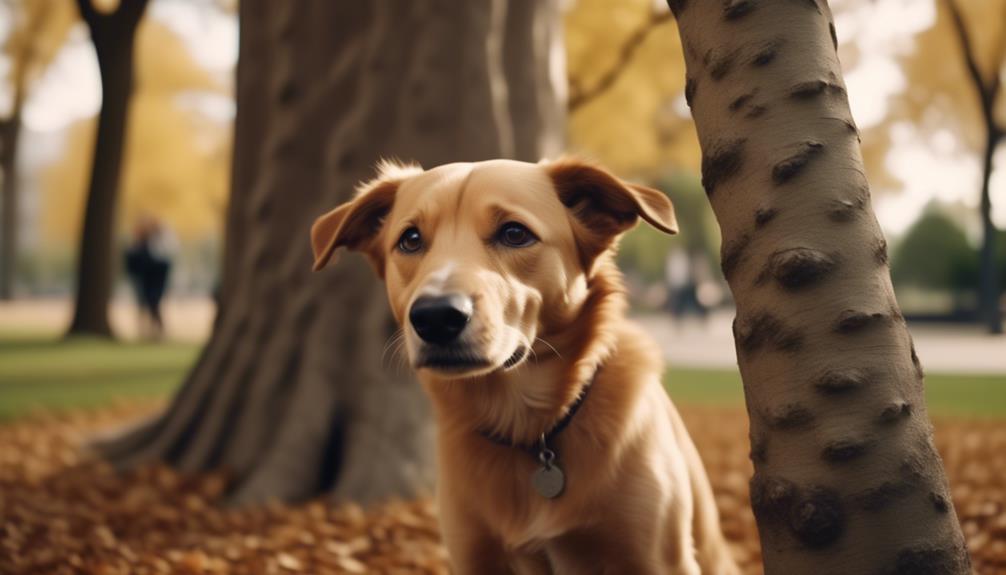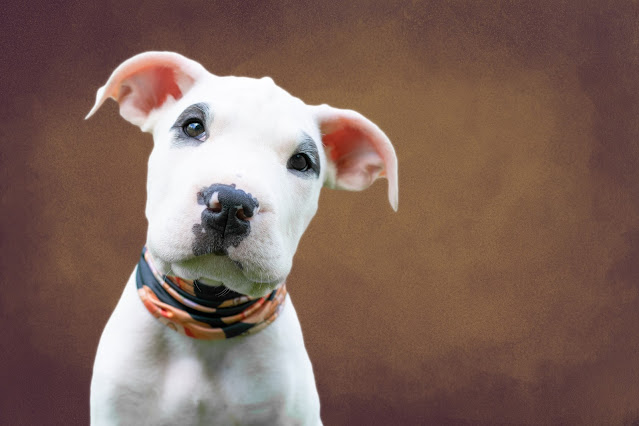Is It Safe To Socialize With A Shy Dog

Is It Safe To Socialize With A Shy Dog: You may think that socializing with a shy dog can be risky, but with the right approach, it can actually be safe and rewarding. Understanding the behavior of a shy dog is crucial to creating a positive and supportive environment for them. By recognizing the signs of fear and avoiding pushing them too hard, you can help them gain confidence and become more comfortable in social situations. So, how exactly can you safely socialize with a shy dog? Keep reading to discover effective techniques and tips that will help you navigate the world of shy dog socialization.
Understanding Shy Dog Behavior
Understanding shy dog behavior is crucial for creating a safe and comfortable environment for your furry friend. Shy dogs often exhibit fear and anxiety in social situations, making it important to approach their socialization with care and understanding. By understanding the reasons behind their behavior, you can help your shy dog feel more confident and comfortable in various situations.
Shy dogs are typically fearful and may show signs of anxiety when faced with unfamiliar people or environments. They may cower, tremble, or attempt to hide when confronted with these situations. It is important to remember that shy dogs are not being stubborn or disobedient; they are simply feeling overwhelmed and scared.
To effectively socialize a shy dog, it is essential to provide a safe and controlled environment. Introduce new people in a calm and relaxed manner, allowing the dog to make the first move and decide when and if introductions are necessary. Avoid pushing too hard and provide opportunities for socialization without forcing interactions. Training classes specifically designed for shy dogs can be beneficial, as they provide a controlled setting for positive interactions and gradual exposure to new experiences.
When working with a shy dog, it is important to avoid coddling or rewarding fear-based behaviors. Instead, focus on positive reinforcement. Praise your dog when they display confidence and reward timid behaviors with treats, attention, and praise. By reinforcing desired actions and behaviors, you can help your shy dog build confidence and overcome their fears.
Signs of Fear in Shy Dogs
When it comes to identifying signs of fear in shy dogs, paying attention to their body language is crucial. Look for trembling, cowering, or hiding behavior as indications that the dog is experiencing fear in new situations. Additionally, watch out for other signs such as excessive panting, drooling, and licking of the lips, which can be signs of stress and fear in shy dogs.
Body Language Cues
To identify signs of fear in shy dogs, observe for tail tucking or low wagging, cowering or hiding, lip licking or yawning, avoiding eye contact, and trembling or shaking. These body language cues can indicate that a dog feels unsafe and fearful in the presence of new people or unfamiliar situations. Tail tucking or low wagging suggests a dog’s attempt to hide or protect themselves.
Cowering or hiding is a clear sign of fear and anxiety. Lip licking or yawning can be a way for dogs to communicate their discomfort. Avoiding eye contact is another indicator of fear, as dogs may try to avoid confrontation or perceived threats. Lastly, trembling or shaking may be seen when a shy dog is overwhelmed by their surroundings. By recognizing these signals, we can better understand a shy dog’s emotions and respond appropriately to create a safe and comfortable environment for them.
Avoidance and Hiding
Look for signs of avoidance and hiding, such as cowering, hiding, or attempting to escape from social interactions, to recognize fear in shy dogs. It is important to understand that these behaviors are indications of their nervousness and discomfort. When a shy dog displays these signs, it is crucial to avoid pushing them too hard, as it can lead to aggression.
Instead, focus on building their confidence through positive reinforcement. A dog trainer can provide valuable guidance in socializing a shy dog. It is essential to observe their body language and reward them when they display confidence and bravery, rather than reinforcing their fearful behavior. Remember, seeking professional help is advisable if the avoidance and hiding behaviors persist, as they can provide specialized techniques to help the dog overcome their fear and become more comfortable in social situations.
Risks of Pushing a Shy Dog Too Far
Pushing a shy dog too far can have detrimental effects on their mental well-being and overall socialization progress. It is important to remember that each dog has its own unique personality and comfort level when it comes to socializing. Forcing a nervous dog into situations that make them uncomfortable can lead to increased fear and anxiety.
When a shy dog is pushed too far, they may exhibit avoidance or defensive behaviors. They may try to hide or retreat from the situation, showing signs of fear such as trembling or cowering. This can make it even more challenging to socialize the dog in the future, as they become more withdrawn and hesitant towards social interactions.
One of the biggest risks of pushing a shy dog too far is the development of fear-based aggression. When a dog feels threatened or overwhelmed, they may resort to aggressive behaviors as a way to protect themselves. This aggression can manifest in barking, growling, or even biting. It is essential to prioritize the safety of both the dog and those around them by avoiding situations that may trigger fear-based aggression.
Pushing a shy dog too far can also damage the trust and bond between the dog and its owner. Dogs rely on their owners for guidance and comfort, and if they are consistently pushed into uncomfortable situations, they may become fearful or resentful towards their owners. This can hinder the training and socialization process, making it more challenging to help the dog become comfortable in new environments.
Importance of Proper Socialization for Shy Dogs
Proper socialization plays a crucial role in the development of shy dogs, allowing them to overcome their fears and build trust and confidence. By gradually exposing them to new environments and experiences, you can help them learn to navigate social interactions at their own pace. Through positive reinforcement and effective treat training, you can encourage brave behaviors and reinforce their progress, ultimately helping them become more comfortable and confident in social situations.
Benefits of Socialization
Socializing a shy dog is a crucial step in helping them overcome their fears and develop confidence in new situations and environments. Proper socialization can greatly benefit shy dogs by providing them with positive experiences and helping them feel more comfortable and secure. Gradual exposure and rewards are effective techniques in desensitizing dogs to anxiety-inducing triggers.
By introducing them to new people, animals, and environments in a controlled and positive manner, shy dogs can learn that these experiences are not threatening. This helps them build trust and reduces their anxiety. Socialization also helps shy dogs learn appropriate behavior and communication skills, making it easier for them to interact with others. In addition, socializing shy dogs can improve their overall well-being and quality of life by reducing stress and promoting mental and emotional stimulation.
Building Trust and Confidence
Gradually introducing new people in a safe environment and allowing the shy dog to take the lead in deciding when and if introductions are necessary is an effective way to build trust and confidence. By giving the dog control over the socialization process, you are helping them feel more comfortable and in control of their environment. Avoid pushing the dog too hard, as this can lead to aggression and further anxiety.
Instead, encourage the dog to face their fears and reward their positive behaviors with treats, attention, and praise. Utilize positive reinforcement to build their confidence, rewarding them for appropriate behavior and avoiding rewarding unwanted behavior. Treats can be used as a positive reinforcement tool during training sessions, luring the dog into new situations and rewarding their progress. Start socialization training in private sessions, focusing on basic obedience skills to strengthen the bond between you and your dog. Gradually expose them to new experiences and environments to help build their confidence over time.
Creating a Safe Environment for Socialization
To create a safe environment for socialization, it is important to introduce new people to your shy dog in a controlled setting, allowing the dog to take the lead and decide when and if introductions are necessary. This approach helps the dog feel more comfortable and in control of the situation. When socializing a nervous dog, it is crucial to be mindful of loud noises and sudden movements that may startle or frighten them. By gradually exposing your dog to different stimuli, you can help them feel more at ease in social situations.
Rewarding your dog is an effective way to encourage calm behavior and build confidence. Instead of coddling a fearful puppy, focus on rewarding brave behavior. Positive reinforcement, such as praise and treats, can be used to reward timid dogs after displaying positive behaviors. This approach helps reinforce desired behavior and encourages the dog to face their fears and overcome them.
During socialization, it is important to teach your dog basic obedience skills. This not only strengthens the bond between the dog and the owner but also helps the dog feel more secure and confident in new situations. Starting socialization in private sessions allows for a controlled environment where you can practice basic obedience skills, gradually building the dog’s confidence for later group socialization exercises.
Using treats as a positive reinforcement tool can also help lure your dog into new and potentially intimidating situations. By giving treats in response to appropriate behavior, you can help your dog associate these situations with positive experiences, further aiding in their socialization process.
Gradual Exposure to New Situations
Introducing shy dogs to new situations should be done gradually, allowing them to acclimate at their own pace and providing positive reinforcement for calm and confident behavior. Socialization training is essential for helping your dog become more comfortable in different environments and with various stimuli. When it comes to socializing a shy or older dog, it is important to understand that each dog is unique and may require more time and patience to adjust.
To begin the process, start with less intimidating situations. This could involve exposing your dog to familiar locations or introducing them to new things in a controlled and calm manner. By gradually increasing the level of exposure, you can help your dog build confidence and reduce anxiety.
During the gradual exposure, it is crucial to let your dog set the pace. Pay attention to their body language and signs of stress, such as panting, trembling, or attempting to hide. If your dog shows signs of fear or discomfort, take a step back and give them more time to acclimate. It is important to never force your dog into a situation that causes distress.
Positive reinforcement plays a vital role in socialization training. Use treats and rewards to create positive associations with new experiences. When your dog displays calm and confident behavior, praise and reward them. This will encourage them to feel more comfortable and secure in unfamiliar situations.
If you find that your dog continues to struggle with socialization or displays excessive fear or aggression, it may be beneficial to seek professional guidance. A professional dog trainer or behaviorist can provide expert advice and develop a customized plan to help your dog overcome their anxieties and improve their social skills.
Tips for Socializing a Shy Dog With Other Dogs
To socialize your shy dog with other dogs, it’s important to start with gentle introductions. Allow your dog to approach and make the first move, avoiding any forceful interactions that could lead to aggression. Use positive reinforcement training, rewarding your dog with treats, attention, and praise after positive behaviors to encourage them to face their fears and build confidence. By taking these steps, you can help your shy dog gradually become more comfortable and sociable around other dogs.
Gentle Introductions to Dogs
When socializing a shy dog with other dogs, it is important to create gentle introductions that allow the dog to feel safe and comfortable initiating contact. Proper socialization is crucial for a shy dog to overcome their fears and build confidence. One way to help your dog is to start in a neutral territory, away from the dog park or any overwhelming environments.
Begin with short, controlled interactions with calm and well-behaved dogs. Avoid pushing too hard or forcing the shy dog to interact with other dogs, as this can lead to aggression or extreme fear. Instead, let the dog set the pace and gradually increase the exposure over time. Loving owners should use positive reinforcement, such as treats and praise, to reward confident and brave actions, while avoiding coddling fearful behavior. By providing gentle introductions and support, you can help your shy dog become more comfortable and confident in socializing with other dogs.
Positive Reinforcement Training
Positive reinforcement training is an effective method for socializing a shy dog with other dogs, focusing on rewarding confident and brave behaviors while encouraging them to face and overcome their fears. By using positive reinforcement techniques such as treats, attention, and praise, you can create a safe and supportive environment for your shy dog to interact with other dogs.
It is important to avoid coddling or rewarding fear-based behaviors, as this can reinforce the dog’s shyness. Instead, you should encourage your dog to confront their fears by providing positive experiences and rewards for their brave actions. Treats can be used as a tool for training, rewarding the dog for appropriate behaviors, and using them to lure the dog into new social situations. Start socialization in private sessions to build your dog’s confidence, gradually introducing them to different environments, sounds, and experiences. With positive reinforcement training, you can help your shy dog become more comfortable and confident around other dogs.
Techniques for Socializing a Shy Dog With Humans
When socializing a shy dog with humans, it is important to create a safe and comfortable environment for the dog to gradually interact and build confidence. Several techniques can be used to help the dog overcome its shyness and develop social skills with humans.
One effective technique is to introduce new people in a safe place for the dog. This allows the dog to feel secure and in control of the situation. It is important to let the dog make the first move and decide when and if introductions are necessary. Pushing too hard can cause the dog to become aggressive, so it is important to be patient and allow the dog to approach at its own pace.
Another important technique is to avoid coddling the dog when it displays fear. While it may be tempting to soothe a fearful puppy, it is important to resist this urge. Rewarding fear-based behaviors can reinforce the dog’s fear and make it more difficult for them to overcome it. Instead, encourage the dog to face its fears and reward positive behaviors.
Positive reinforcement is also a crucial technique for socializing a shy dog with humans. Praise the dog when it displays confidence and bravery, and reward timid dogs with treats, attention, and praise after positive behaviors. It is important to focus on reinforcing desired actions and behaviors and avoid rewarding unwanted behavior. Using positive reinforcement instead of punishment helps to build a positive association with socializing and encourages the dog to engage with humans.
One-on-one training and simple socialization exercises can also be beneficial. Begin socialization training in private sessions and practice basic obedience skills to strengthen the bond between the dog and owner. Private sessions help build the dog’s confidence for later group socialization exercises. Additionally, exposing the dog to new experiences, sounds, sights, smells, textures, weather, and tastes can help them become more comfortable in various situations.
Using Positive Reinforcement in Socialization
To effectively socialize a shy dog with humans, it is crucial to utilize positive reinforcement techniques that encourage the dog’s confidence and bravery in social situations. Positive reinforcement involves rewarding desired behavior to increase the likelihood of it being repeated. When it comes to shy dogs, positive reinforcement can be a powerful tool in helping them feel safe and comfortable in social contexts.
When socializing a shy dog, it is important to reward timid behavior with treats, attention, and praise after positive interactions with people and other dogs. This helps the dog associate social situations with positive experiences, building their confidence over time. However, it is crucial to avoid coddling or rewarding fear-based behaviors, as this can inadvertently reinforce anxiety.
Instead, focus on reinforcing desired actions and behaviors using positive reinforcement rather than punishment. For instance, if your shy dog approaches a new person or investigates a novel object, reward them with treats or praise. Gradually introduce the dog to different environments and experiences, using treats and praise to build their confidence.
It is also essential to consider the context in which positive reinforcement is applied. Each dog is unique, and what may be rewarding for one dog may not be for another. Pay attention to your dog’s individual preferences and find what motivates them. Some dogs may respond well to food rewards, while others may prefer play or verbal praise.
Seeking Professional Help for Socialization Challenges
If you are facing challenges in socializing your shy dog, seeking professional help from a certified dog trainer or behaviorist is highly recommended. Consulting with a professional who specializes in dog behavior will allow you to effectively address your dog’s socialization challenges. These experts can provide tailored strategies and techniques to help your shy dog overcome the obstacles they face in social situations.
A professional dog trainer or behaviorist will begin by assessing your dog’s specific needs, temperament, and history. By understanding your dog’s background and individual characteristics, they can create a customized socialization plan that takes into account their unique circumstances. This personalized approach ensures that the socialization process is tailored to your dog’s specific requirements, maximizing their chances of success.
One of the key benefits of seeking professional help is the ability to identify and address any underlying causes of fear and anxiety in your shy dog. Behaviorists are trained to recognize and understand the root causes of these issues, offering specialized support to help your dog overcome their fears. By addressing these underlying issues, your dog can feel more confident and comfortable in social situations.
Furthermore, seeking professional help ensures that socialization is approached in a safe and controlled manner. Professionals prioritize your dog’s well-being and progress, ensuring that the socialization process is conducted at a pace that suits your dog’s comfort level. This helps to mitigate any potential risks and allows your shy dog to gradually build their confidence and social skills.
Patience and Persistence in Socializing a Shy Dog
After seeking professional help for socializing your shy dog, it is important to approach the process with patience and persistence. Remember that socialization is a gradual process, and it is crucial to give your furry friend enough time to adjust to new experiences and people. When socializing a shy dog, it is essential to ensure that they are old enough to handle social interactions. Puppies are typically ready for socialization after they have received their necessary vaccinations, which is usually around 12 weeks old.
During socialization sessions, it is crucial to maintain a calm and relaxed demeanor. Dogs are highly perceptive and can sense when their owners are stressed or anxious. By staying calm, you can help your shy dog feel more at ease in unfamiliar situations. Basic obedience training is also beneficial in socializing a shy dog. Teaching your dog basic commands such as “sit,” “stay,” and “come” can help build their confidence and establish a stronger bond between you and your furry friend.
When socializing a shy dog, it is crucial to be patient and understanding. Your dog may feel afraid or anxious in new situations, and it is essential to respect their boundaries. Avoid forcing interactions or pushing your dog too hard, as this can cause them to become aggressive or more fearful. Instead, provide opportunities for socialization without overwhelming your dog. Gradually expose them to new people, places, and experiences, allowing them to make the first move and decide when and if introductions are necessary.
Remember that socializing a shy dog takes time and persistence. Celebrate small victories and praise your dog when they display confidence and bravery. Use positive reinforcement techniques, such as treats, attention, and praise, to reward positive behaviors. Avoid coddling or rewarding fear-based behaviors, as this can reinforce their anxiety. With patience, persistence, and positive reinforcement, you can help your shy dog become more comfortable and confident in social situations.
Is It Safe To Socialize With A Shy Dog Frequently Asked Questions
How Do You Socialize a Shy Dog?
To socialize a shy dog, use positive reinforcement and gradual exposure. Build trust by enrolling in obedience classes and using calming techniques. If needed, seek professional help for specialized guidance.
Is It OK for a Dog to Be Shy?
It is okay for a dog to be shy. Understanding shyness in dogs is important. Building trust and using techniques to help them feel comfortable can lead to successful socialization. Patience and creating a positive environment are key.
Can a Shy Dog Become More Outgoing?
Building confidence in a shy dog is possible. By slowly introducing new environments, using positive reinforcement training, socializing with calm and friendly dogs, gradually exposing them to new people and situations, and having patience and understanding, they can become more outgoing.
What to Do When You Meet a Shy Dog?
When meeting a shy dog, it’s important to build trust by providing a safe space and offering slow introductions. Use positive reinforcement, patience, and understanding to encourage the dog’s progress. If needed, seek professional help for additional guidance.
Conclusion
In conclusion, socializing with a shy dog can be safe and beneficial when approached with patience and understanding. By creating a safe environment and allowing the dog to set the pace, we can help them gain confidence and become more comfortable in social situations. It is important to avoid pushing too hard and reward positive behaviors while seeking professional help if needed. With proper training and positive reinforcement, shy dogs can thrive and enjoy social interactions.








